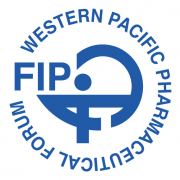Pharmaceutical Benefits Scheme (PBS) Scorecard (Budget edition)
Reference :
2013-05-16
Medicines Partnership of Australia
Pharmaceutical Benefits Scheme (PBS) Scorecard (Budget edition)
PBS: a Budget bright spot
Figure 1 – PBS forward estimates downgraded by $4 billion over two budgets
In last year’s Budget the expectation of expenditure on pharmaceutical benefits was reduced by $1.6 billion
over four years. This year’s Budget has gone even further – downgrading estimates by an additional $2.5
billion over four years. None of this has come from new savings measures. All of the savings from Expanded
and Accelerated Price Disclosure and the Fifth Community Pharmacy Agreement (combined, a total saving
of $2.5 billion over five years), were already factored in to the 2010 Budget. The additional $4 billion
downgrade over the last two budgets is simply the result of Treasury having previously underestimated the
impact of PBS Reforms and overestimated the demand for medicines.
The latest forward estimates also show that PBS expenditure as a percentage of Gross Domestic Product
(GDP) is expected to decline in each of the next four years.
Government Pharmaceutical Benefits as a % of GDP
(all expenditure, including supply through hospitals)
Medicines Partnership of Australia
Pharmaceutical Benefits Scheme (PBS) Scorecard (Budget edition)
Figure 2 – PBS expenditure is growing slower than other major areas of the health budget
The Budget states that total Health expenditure is estimated to increase by a total of 8.6% in real terms
through to 2016-17, driven by a growing and ageing population. However, the PBS expenditure component
of this budget is estimated to grow by a much lower rate of only 5%. In contrast, expenditure for Public
Hospitals is set to increase rapidly by 17% in real terms.
Public Hospitals and Medical Services make up more than two thirds of total health expenditure, with a total
cost over the forward estimates of $186 million compared to $47 billion for the PBS. It is worth noting that
the total growth in annual expenditure on Public Hospitals and Medical Services over the next four years
($10 billion) is equivalent to the total amount currently spent on PBS medicines in one year.
Medicines Partnership of Australia
Pharmaceutical Benefits Scheme (PBS) Scorecard (Budget edition)
Figure 3: Price Disclosure in action
Through until April 2013 reductions in the price of PBS medicines as a result of Price Disclosure have applied
to 130 drugs. The impact of these price reductions is depicted below. A further 39 price reduction will apply
on 1 August 2013. Every off-patent drug is subject to Price Disclosure, ensuring that taxpayers reap the
benefit of the highly competitive market for these drugs.
Percentage price cuts. Source: CSES, Victoria University.
Medicines Partnership of Australia
Pharmaceutical Benefits Scheme (PBS) Scorecard (Budget edition)
Are prescription medicine prices growing faster
than the CPI and houshold incomes in Australia?
Percentage change in Consumer Price Index and median Household Income*
June quarter 1991 vs. June quarter 2012
Figure 4 – Low growth in out-of-pocket costs for medicines
Figure 4 uses data from the Australian Bureau of Statistics to look at the growth in the price consumers pay
for medicines compared with the growth in overall inflation and household incomes. The data shows that
over the last two decades between June 1991 and June 2012, consumer medicine prices have grown by 57%.
This might sound large, however, this compares with overall prices in the economy growing by 70% over the
same period. This means that the prices consumers pay for their medicines has been lower than inflation
over the last 20 years.
Interestingly, median household income has grown by 118% over the same period, meaning that over the
last 20 years household incomes have grown at more than double the rate of medicine prices. This compares
with other areas of household expenditure which have grown at more than the rate of general inflation and
household income, such as the prices for utilities and petrol.
Over the same 20 year period the prices consumers pay for medical and hospital services have increased
by 191%, or more than three times the rate that medicine prices have grown, and faster than household
incomes have grown over the same period. So while certainly consumers may be feeling the pressure of
higher prices for health costs, this has not been due to medicine prices.
